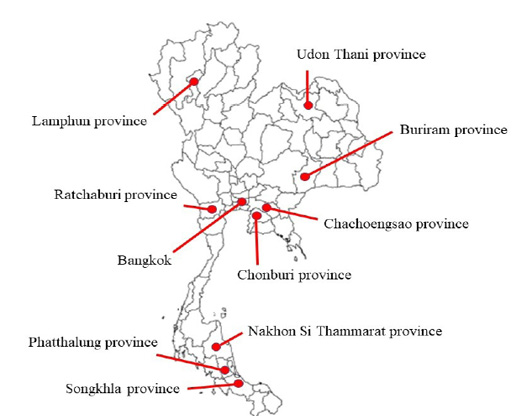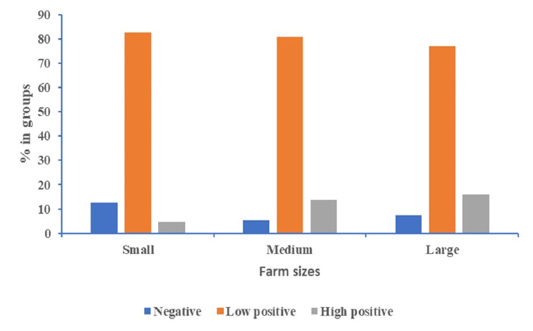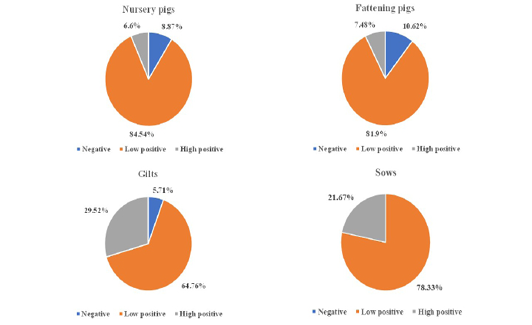Seroprevalence of Porcine Circovirus Type 2 in Domestic Pigs of Thailand: Two Decades After Nationwide Vaccines Application
Seroprevalence of Porcine Circovirus Type 2 in Domestic Pigs of Thailand: Two Decades After Nationwide Vaccines Application
Chanathip Thammakarn1*, Sawanya Umphonphison1, Paitoon Kaewhom2, Kanokrat Srikijkasemwat1
The sampling areas located in 10 provinces of Thailand including Bangkok, Lamphun, Chachoengsao, Chonburi, Buriram, Udon Thani, Ratchaburi, Songkhla, Phatthalung and Nakhon Si Thammarat province.
Serological prevalence of PCV2 in various farm sizes. The farms were categorized into 3 sizes, including small (50-500 sows), medium (501-5,000 sows) and large (>5,000 sows) sizes. The immune response levels are presented in three categories, negative (S/P ratio of 0.49 or less or the titer of ≤1,070), low positive (S/P ratio of 0.5-2.3 or the titer of 1,071-5,766) and high positive (S/P ratio of 2.31 or greater or the titer of ≥5,767).
Serological prevalence of PCV2 in the different age categories of pigs. The pig populations were categorized into 4 groups, including nursery pig (2-10 weeks), fattening pig (10-26 weeks), gilt (>26 weeks, non-serviced) and sow (>26 weeks, serviced). The immune response levels are presented in three categoris, negative (S/P ratio of 0.49 or less or the titer of ≤1,070), low positive (S/P ratio of 0.5-2.3 or the titer of 1,071-5,766) and high positive (S/P ratio of 2.31 or greater or the titer of ≥5,767).









